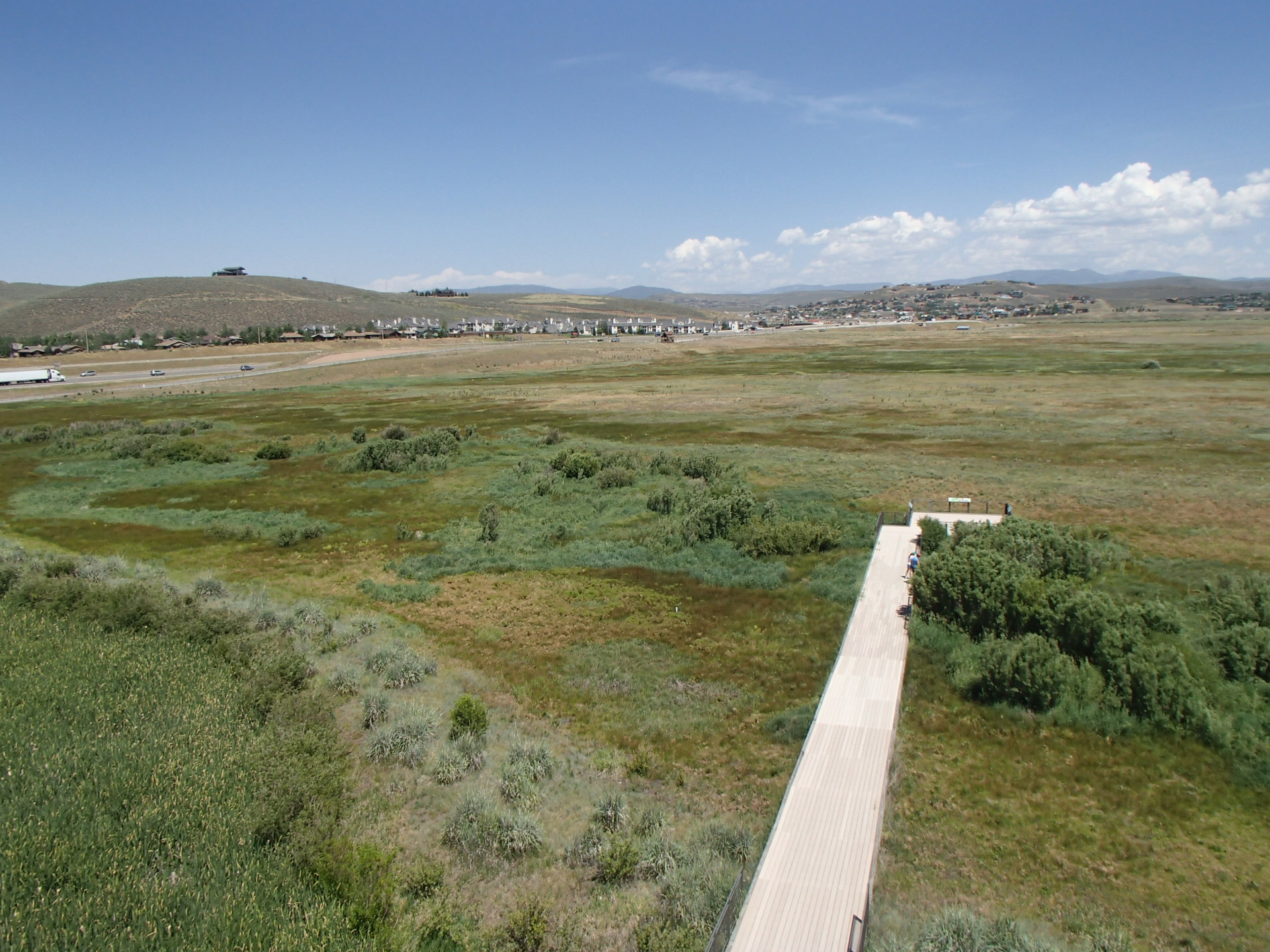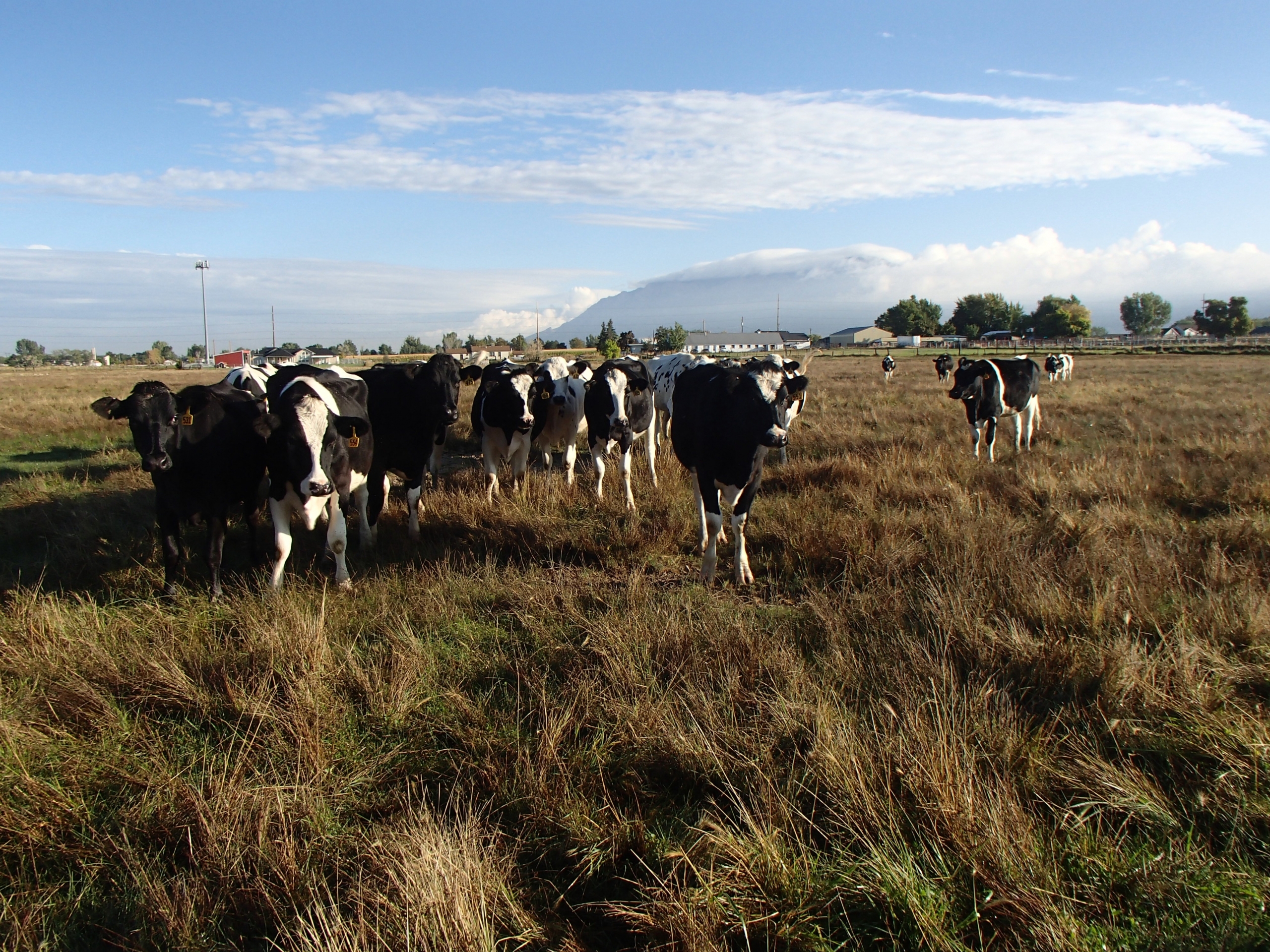Wetlands on Private Land
Wetlands provide diverse ecosystem functions including flood attenuation (reducing flood risk), pollutant retention, sediment storage, and nutrient cycling. The economic value of these functions can be difficult to quantify, but the reduced costs of downstream water treatment, prevention of flood damage and erosion, and increased tourism from hunting, fishing, or outdoor recreation are enjoyed by everyone. Wetlands have special protections to prevent unnecessary loss and degradation because of all the functions they provide. Because about one-half of vegetated wetlands in Utah occur on private lands, landowners are integral to wetland conservation and protection.
Conservation

Swaner Nature Preserve, created from private lands formerly used to raise cattle, now protects 1,100 acres of mixed wetlands and uplands near Park City, Utah. The preserve offers educational opportunities and hiking trails for the public.
There are many actions landowners can take to minimize impacts to wetlands on their property, including maintaining natural vegetation buffer strips around streams and wetlands, keeping pets and livestock out of important wildlife areas during nesting seasons, and avoiding actions that disturb soils, especially when soils are wet. Landowners interested in wetland conservation have many options to temporarily or permanently protect their wetlands, often with some financial incentive. A conservation easement allows landowners to protect a wetland from development while maintaining ownership and use of the land. Conservation easements often qualify as charitable tax deductions on federal income tax returns and can sometimes lead to property tax savings as well. Temporary protections include limited-term easements and leases. There are also numerous opportunities to receive technical and financial assistance to restore wetlands.
Regulation

Wetlands such as this wet meadow near West Haven are frequently used as pasture for livestock, an activity allowed under the Clean Water Act and USDA Swampbuster provisions.
Because wetlands play such an important role in keeping our water clean, they are protected under the Clean Water Act. Typical actions that require permits include discharging dredge or fill material into wetlands, constructing residential, industrial, or recreational developments, building levees, dams, and dikes, and installing underground utility lines. Some activities are exempt from permitting requirements, including many routine farming practices. Under Swampbuster provisions in the 1985 Farm Bill, landowners may lose U.S. Department of Agriculture farm program benefits if crops are produced on a wetland converted or drained after November 28, 1990. The Natural Resources Conservation Service (NRCS) will delineate wetland boundaries on agricultural lands and help farmers stay in compliance with the Swampbuster provisions. The U.S. Army Corps of Engineers (Army Corps) is the lead agency in charge of regulating wetland impacts on private and public lands in Utah. The permitting process does not prohibit impactful activities in wetlands, but examines the potential impacts of a project and how to avoid, minimize, or mitigate any impacts. Nationwide, the Army Corps only denies three percent of all permit requests. A wetland consultant may be helpful for navigating the permitting process or accurately delineating wetland boundaries. Additional information about wetland regulation in Utah can be provided by local USACE or NRCS offices.









